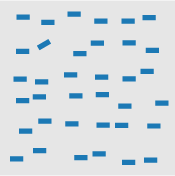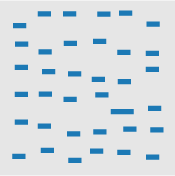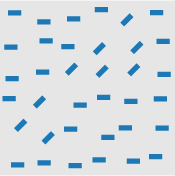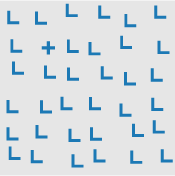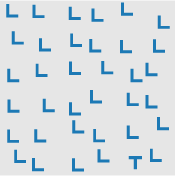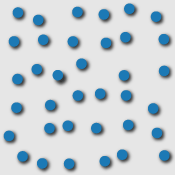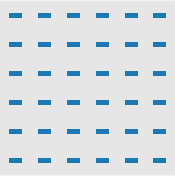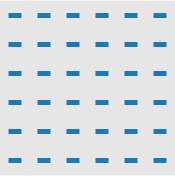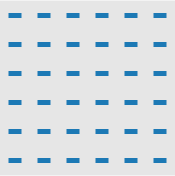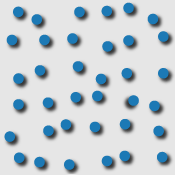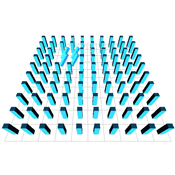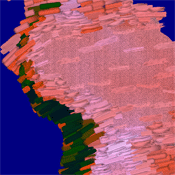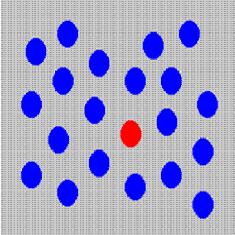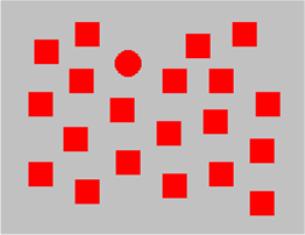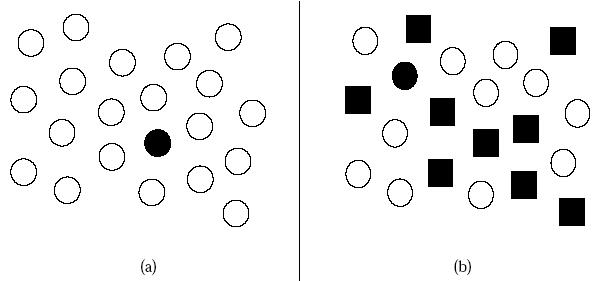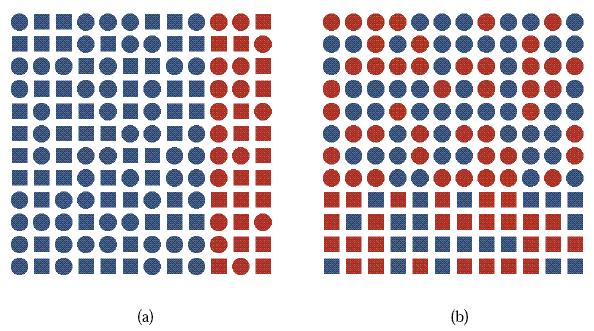Teaching:TUW - UE InfoVis WS 2009/10 - Gruppe G12 - Aufgabe 1 - Preattentive Processing: Difference between revisions
No edit summary |
No edit summary |
||
| Line 49: | Line 49: | ||
|'''lighting direction'''<br>The lightning is normally constant for all objects in a certain scene so variations in the lightning of a single object can be used a preattentiv cue. | |'''lighting direction'''<br>The lightning is normally constant for all objects in a certain scene so variations in the lightning of a single object can be used a preattentiv cue. | ||
|[[Image:Tg_3d_light.gif|100px]] | |[[Image:Tg_3d_light.gif|100px]] | ||
|'''3D orientation'''<br> | |'''3D orientation'''<br>The orientation in a 3D space can also be used as a cue for preattentive processing. | ||
|[[Image:Tg_orient_3d.gif|100px]] | |[[Image:Tg_orient_3d.gif|100px]] | ||
|- | |- | ||
Revision as of 21:02, 9 November 2009
Preattentive processing
Preattentive features
Compiled list from [Healey, 2005], [Chipman, 1996]
Examples for preattentive processing
Detecting the Red Object preattentively.[Healey et al., 1996] One visual variable and very easy to find it.
Detecting the Circle preattentively.[Chipman, 1996] It is more difficult but still preantentiv.
Examples of two target detection tasks: (a) target can be detected preattentively because it possess the feature “filled”; (b) target cannot be detected preattentively because it has no visual feature that is unique from its distractors.[Healey et al., 1996]
Region segregation by form and hue: (a) hue boundary is identified preattentively, even though form varies randomly in the two regions; (b) random hue variations interfere with the identification of a region boundary based on form.[Healey et al., 1996]
Conclusion
Any visual processing of that item prior to the act of selection can be called “preattentive”.[Wolfe, Treisma, 2003]
Preattentive processing can help to rapidly draw the focus of attention to a target with a unique visual feature (i.e., little or no searching is required in the preattentive case). [Healey, 2005]
References
- [Kosara et al., 2002] Robert Kosara, Silvia Miksch, Helwig Hauser. Focus+Context Taken Literally IEEE Computer Graphics & Applications (CG&A), Special Issue on Information Visualization, 22(1), pages 22-29. Created at: January/February, 2002. http://www.kosara.net/papers/Kosara_CGA_2002.pdf .
- [Healey et al., 1996] Healey, C. G., Booth, K. S., and Enns, J. T.. High-Speed Visual Estimation Using Preattentive Processing. ACM Transactions on Human Computer Interaction 3(2), pages 107-135, Created at: 1996. http://www.csc.ncsu.edu/faculty/healey/download/tochi.96.pdf .
- [Wolfe, Treisma, 2003] Jeremy M Wolfe, Anne Treisma. What shall we do with the preattentive processing stage: Use it or lose it?, Todd S Horowitz poster presented at the Third Annual Meeting of the Vision Sciences Society. Sarasota. Created at: May, 2003. http://search.bwh.harvard.edu/links/talks/VSS03-JMW.pdf .
- [Healey, 2005] Christopher G. Healey. Perception in Visualization. Department of Computer Science, North Carolina State University. Created at: May, 2005. http://www.csc.ncsu.edu/faculty/healey/PP/index.html#Tri_Cog_Psych:80 .
- [Chipman, 1996] Gene Chipman. Review of High Speed Visual Estimation Using Preattantive Processing (Healy, Booth and Enns). Created at: 1996, Retrieved at: October 24, 2005. http://www.cs.umd.edu/class/spring2002/cmsc838f/preattentive.ppt#267 .
